Gardening FAQ #21 – What You Need To Know
In this article, we share when pollination is needed for fruit, what is indian borage and much more. Let’s go through the common gardening FAQ, problems and solutions you need when growing your plants either indoor and outdoor.
Pumpkin may need pollination to fruit – a common question in gardening FAQ
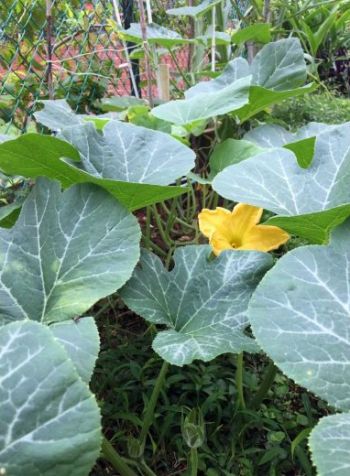 I planted pumpkin with seeds taken from the fruit I bought from the market. It grew and bloomed, but the flowers dropped one by one and, to date, there is no fruit. Why is this so?
I planted pumpkin with seeds taken from the fruit I bought from the market. It grew and bloomed, but the flowers dropped one by one and, to date, there is no fruit. Why is this so?
A pumpkin vine generally produces an abundance of male flowers which appear first on the plant. Female flowers come slightly later.
They have a “miniature fruit” behind the whorl of petals which is the ovary of the flower.
Male flowers do not have this and they do not produce fruit. As a result, they will drop off after they open and fade.
If your female flowers do not lead to fruit, you may want to check if there are natural pollinators in your garden such as bees, which do the pollination work.
The usage of garden pesticides and mosquito fogging can also lead to a lower natural bee population.
If this is the case, you can perform hand pollination – you take pollen from the male flowers and transfer it to female ones.
Below is a great video guide on this procedure on how to successfully find the male and female pumpkin flowers and then carefully transfer pollen from the male flower to the female flower. After this successful pollination, you can then see the baby pumpkins grow to full size.
Plant is a close relative of the Indian borage
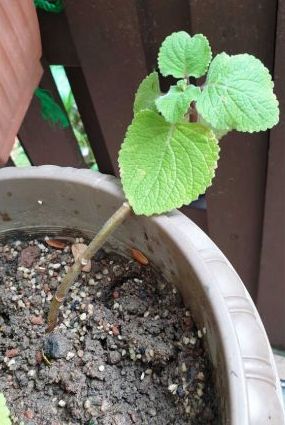 I was given a cutting of this plant. Its leaves have a strong lemon smell and are big like the Indian borage’s. However, the leaves feel papery. What plant is this? I was told the leaves can be made into a drink to soothe sore throats.
I was given a cutting of this plant. Its leaves have a strong lemon smell and are big like the Indian borage’s. However, the leaves feel papery. What plant is this? I was told the leaves can be made into a drink to soothe sore throats.
The plant is botanically known as Plectranthus zeylanicus. It is reported to be endemic to Sri Lanka and its Sinhalese name is Iruveriya.
There is some confusion over its identity. It is not to be mistaken for its close relative, the Indian borage (Plectranthus amboinicus), though the two species look very similar.
This plant is sometimes called “lemon balm” due to its citrusy scent. However, the true Lemon Balm (Melissa officinalis) is another plant species altogether.
The Plectranthus zeylanicus is reportedly used in Ayurvedic medicine for the treatment of ailments such as fever, eye issues and diarrhoea.
If you want to grow this under a well-controlled environment, read our post on Guide to Growing Tents.
Wilting seedlings may be due to transplant shock
I got my seeds from the market sprouted very well. However after I transplanted them into a bigger pot, they wilted. What happen?
The issue could be due to transplant shock. When transplanting the seedlings, did you disturb the roots excessively, such as removing soil from the roots? Or was a clump of seedlings split apart to be planted individually?
Either operation will damage the seedlings’ roots and cause the plants to suffer transplant shock. Damaged roots are not able to uptake water for the plant and it will wilt as a result. If this is not managed properly, affected seedlings will dry out and die.
It is better to start seedlings in a seedling tray. They can develop a good root system that wraps around the growing media and be removed from the tray as seedling plugs with minimal damage to the roots. Seedling plugs can then be moved to their final location with a lower risk of transplant shock.
If you want to do such transplant easily, you should explore using grow bags. See my other post on grow bags.
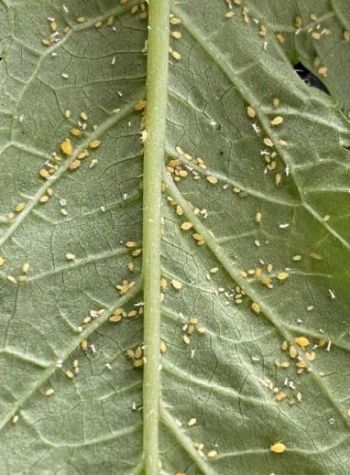 My eight lady’s finger plants have been growing well until recently. I notice small yellow insects crawling on the underside of the leaves and the plants seem to have stopped fruiting. I pruned the affected leaves and have been spraying neem oil on the remaining ones for the last three days. What else can I do to bring my plants back to health?
My eight lady’s finger plants have been growing well until recently. I notice small yellow insects crawling on the underside of the leaves and the plants seem to have stopped fruiting. I pruned the affected leaves and have been spraying neem oil on the remaining ones for the last three days. What else can I do to bring my plants back to health? 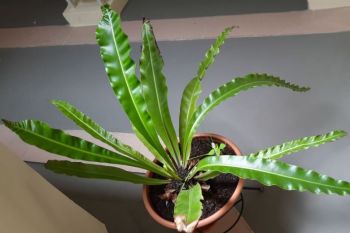 The edges of the leaves on my fern curl like waves and the tips appear pinched and brown. I keep the plant in a windy corridor and it gets some sun during noon. What is wrong with the plant?
The edges of the leaves on my fern curl like waves and the tips appear pinched and brown. I keep the plant in a windy corridor and it gets some sun during noon. What is wrong with the plant?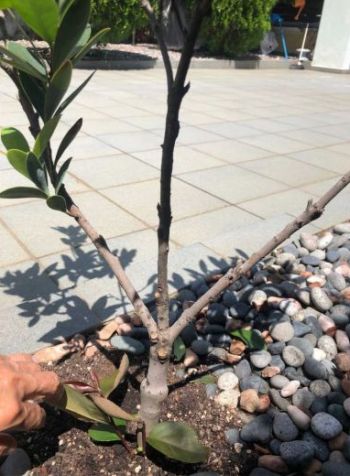 I notice that this short red gorgeous flower plant has another species with a different type of leaf branching from the main trunk. I initially thought it was just another independent plant with bigger, purplish leaves budding from the ground. But on closer look and after removing some soil, I realise the two stems were indeed branches of the main plant. What causes this and what should I do to ensure the plant is not taken over by a parasite?
I notice that this short red gorgeous flower plant has another species with a different type of leaf branching from the main trunk. I initially thought it was just another independent plant with bigger, purplish leaves budding from the ground. But on closer look and after removing some soil, I realise the two stems were indeed branches of the main plant. What causes this and what should I do to ensure the plant is not taken over by a parasite?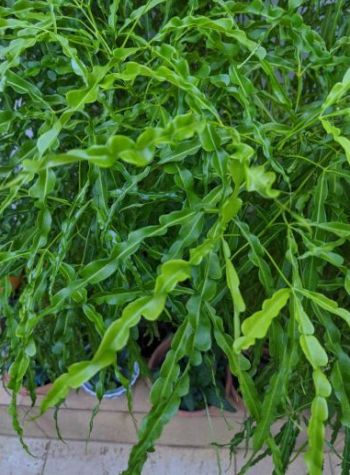 We have these plant in our garden. What plant is this and do they have any use, such as being able to repel mosquitoes?
We have these plant in our garden. What plant is this and do they have any use, such as being able to repel mosquitoes?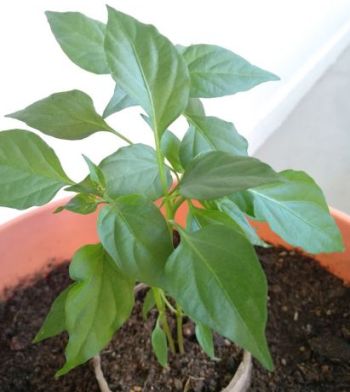 The new leaves of my chilli plant are infested with tiny bugs. I have washed them off, but they keep reappearing. What are they and how do I get rid of them? Also, I have grown this pomegranate for some time and recently discovered other plants in the pot. What are they and are they useful?
The new leaves of my chilli plant are infested with tiny bugs. I have washed them off, but they keep reappearing. What are they and how do I get rid of them? Also, I have grown this pomegranate for some time and recently discovered other plants in the pot. What are they and are they useful?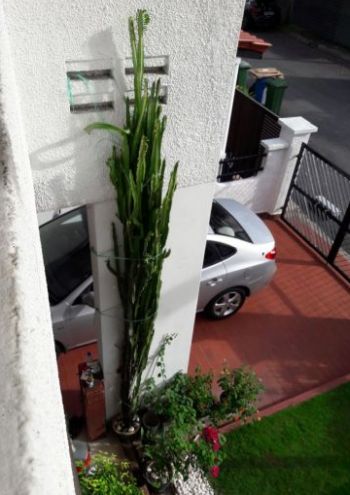 This cactus has been with me for more than 14 years and is now 4m tall. What is its name? In recent months, some parts at the lower end of the plant have turned brown. Is this a sign of decay? I have treated it with pesticides.
This cactus has been with me for more than 14 years and is now 4m tall. What is its name? In recent months, some parts at the lower end of the plant have turned brown. Is this a sign of decay? I have treated it with pesticides.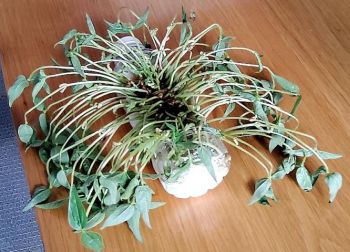 I grew this plant from green beans. I notice the shoots bending downwards recently as I was watering the plant. Is this common or is it because the plant lacks water?
I grew this plant from green beans. I notice the shoots bending downwards recently as I was watering the plant. Is this common or is it because the plant lacks water? 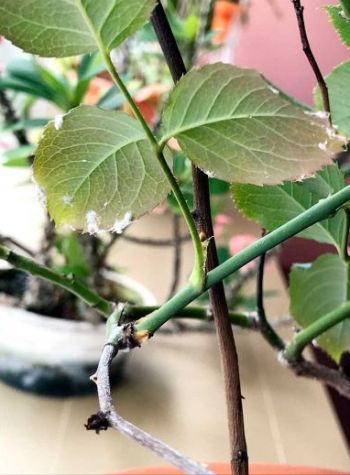 I have some potted plants that seem infected with mites. I have been applying diluted dishwasher liquid (one teaspoon in 300ml water) on the affected areas. It helps to get rid of the infection, but not completely. What can I do?
I have some potted plants that seem infected with mites. I have been applying diluted dishwasher liquid (one teaspoon in 300ml water) on the affected areas. It helps to get rid of the infection, but not completely. What can I do? 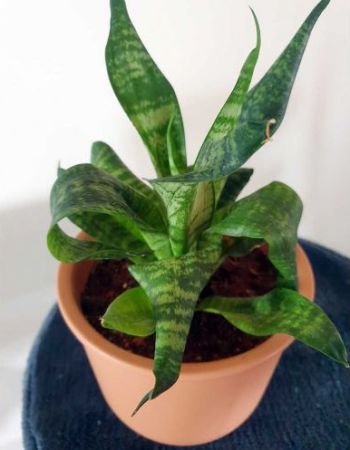 I have some potted snake plants I keep indoors. Lately, the leaves of two of the plants became curved and lumpy. I always use a small water spray and sun the plants twice weekly. What is wrong with the plants?
I have some potted snake plants I keep indoors. Lately, the leaves of two of the plants became curved and lumpy. I always use a small water spray and sun the plants twice weekly. What is wrong with the plants?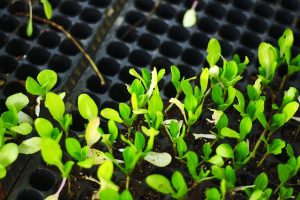
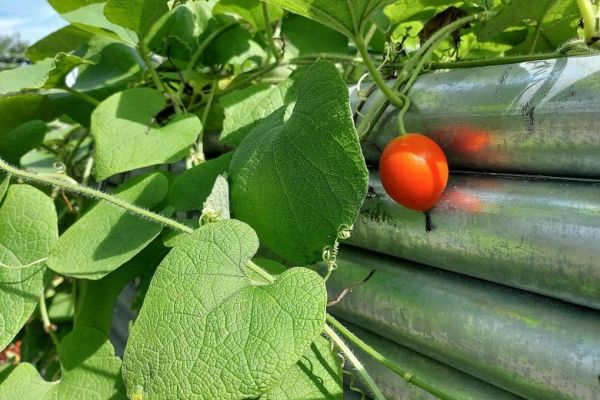
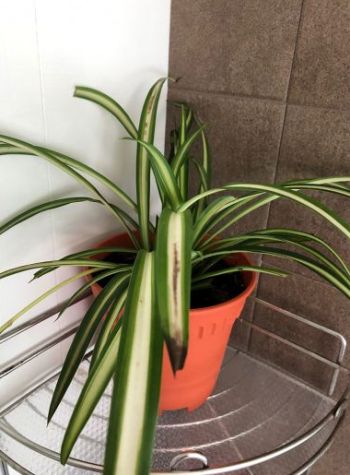 I bought this plant recently and placed it in my bathroom. I saw on a television programme that this plant is said to help absorb odours. But the leaves are turning black. What is wrong?
I bought this plant recently and placed it in my bathroom. I saw on a television programme that this plant is said to help absorb odours. But the leaves are turning black. What is wrong?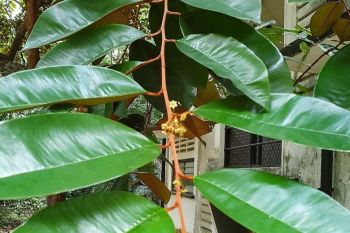 I saw this large tree with fruit near my place. What tree is this and is the fruit edible?
I saw this large tree with fruit near my place. What tree is this and is the fruit edible? 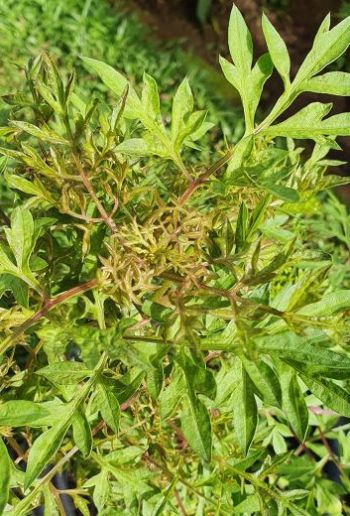 I grow ulam raja in a pot. I harvested some leaves recently, pruning the top of the plant. But now, the new leaves look crinkled at the top as well as at the bottom of the stem. What is the right way to prune the plant and how regularly can I harvest the leaves?
I grow ulam raja in a pot. I harvested some leaves recently, pruning the top of the plant. But now, the new leaves look crinkled at the top as well as at the bottom of the stem. What is the right way to prune the plant and how regularly can I harvest the leaves?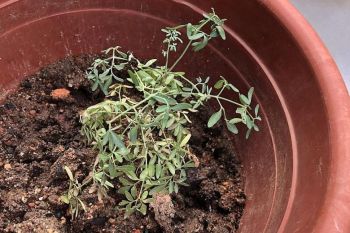 This herb gives green bean soup a fragrant and unique flavour. But it is not growing well. What should I do?
This herb gives green bean soup a fragrant and unique flavour. But it is not growing well. What should I do?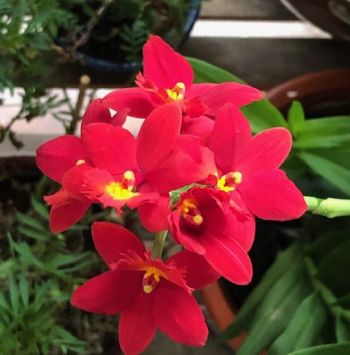 What is the name of this orchid growing in my balcony?
What is the name of this orchid growing in my balcony?